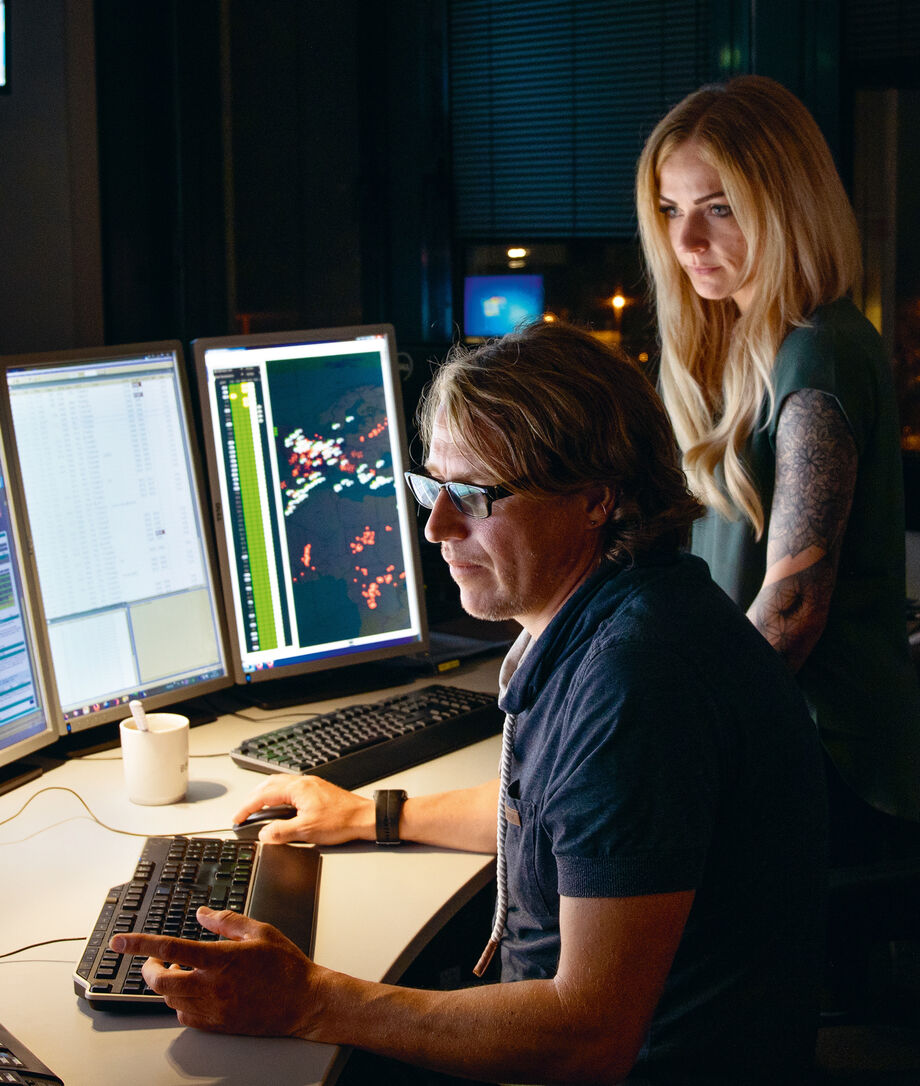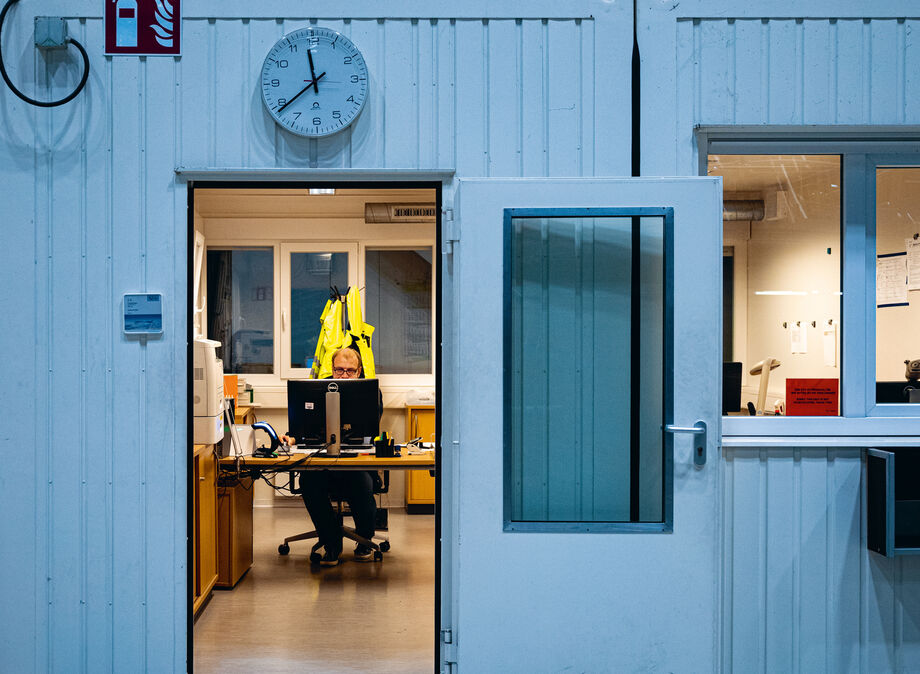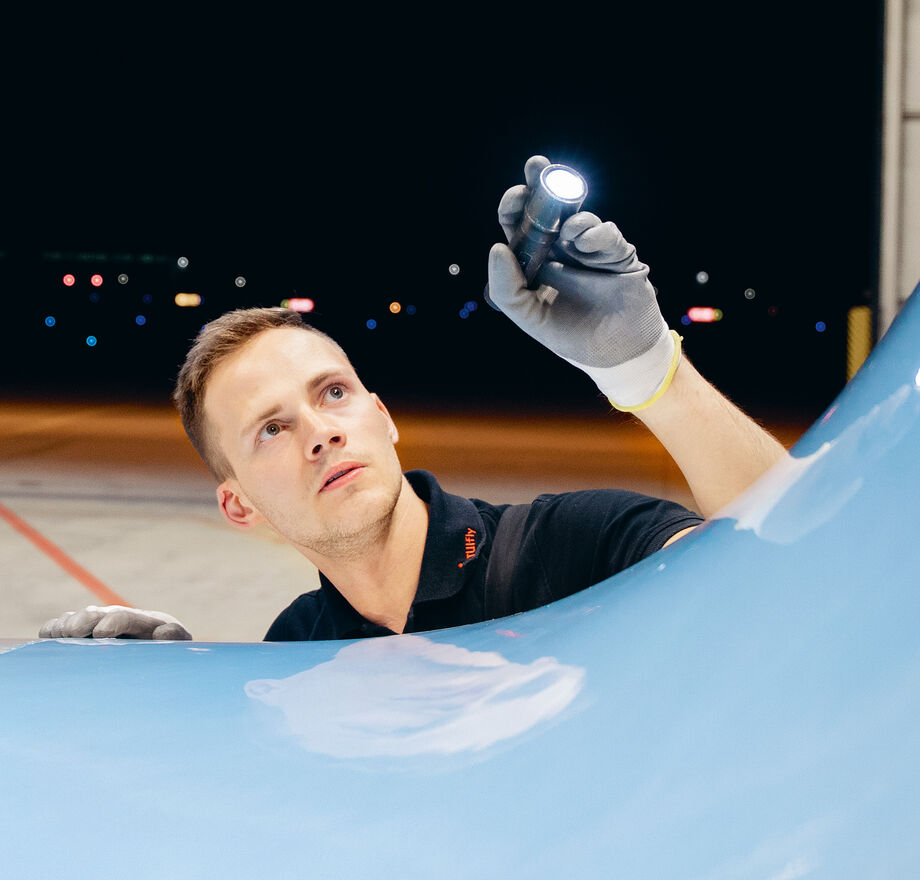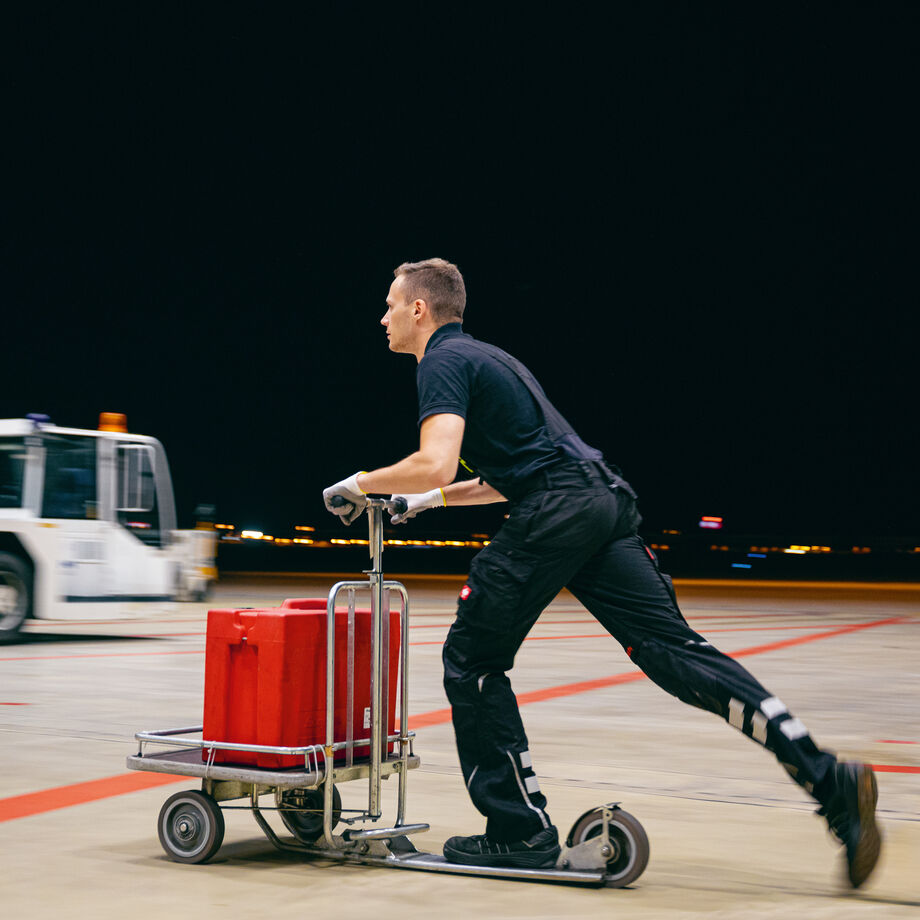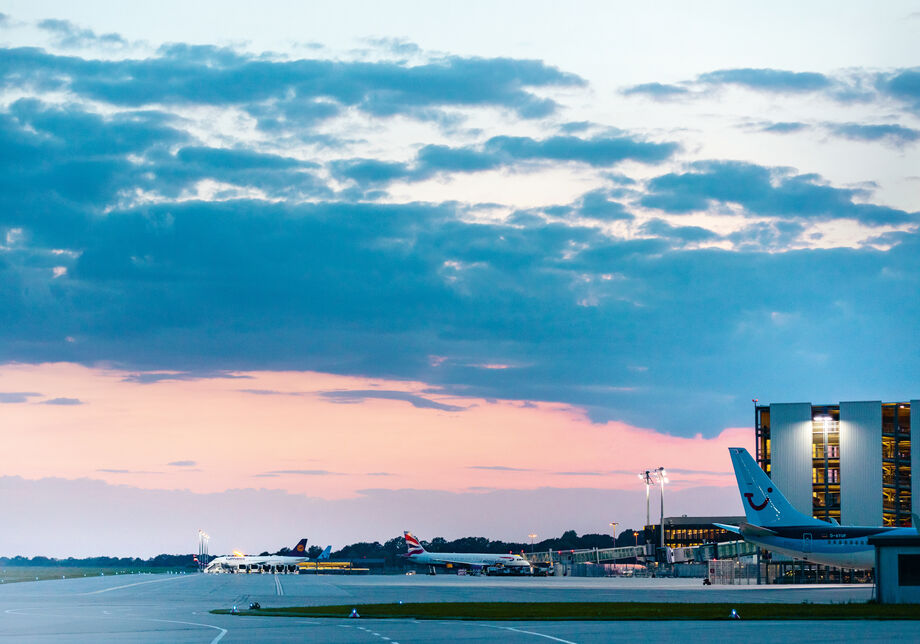10:00 pm The night shift assembles to discuss the P Check scheduled for tonight. This major inspection is due every 600 flight hours and is much more comprehensive than the daily and weekly checks performed out on the apron while the aircraft is operating. Marcus Oberheide, one of two shift supervisors, divides the men into teams. Engines, cabin, cargo hold, wings, fuselage: clearly defined tasks are allocated to each, old hands and trainees work side by side. Within minutes the teams are fitted out with the tools they need and have taken up their positions along the plane. The cleaners have arrived too and set about getting the cabin shipshape.
TUI fly HQ, Operations Centre
11:40 pm A few metres away up on the 4th floor of TUI fly headquarters. The lights are dimmed, the sprawling office is mainly lit by the glow from many computer screens. Scattered across work islands, the flight dispatchers at TUI Group Operations Centre (GOC) sit alongside their colleagues from Crew Contact. Both teams work in three shifts, 24 hours a day, seven days a week. Tonight Peter Machts is in charge of the GOC. With the aid of four screens, he not only has an overview of TUI’s entire airline fleet but can simultaneously check on anything that might potentially hamper flight operations. At the moment, everything is going to plan, but things can change at any moment. Crisis management is part of the job profile: “In bad weather, strikes or when planes are grounded for repairs, a relaxed shift can turn stressful within seconds,” he knows from experience. Then a Plan B must kick in straight away. Usually it means making a lot of little cogs turn in sync, and so the GOC team spend many an hour in nocturnal video conferences with other units. The overriding aim is to minimise the impact on passengers – while also keeping an eye on environmental impacts and costs.




 Austria
Austria


